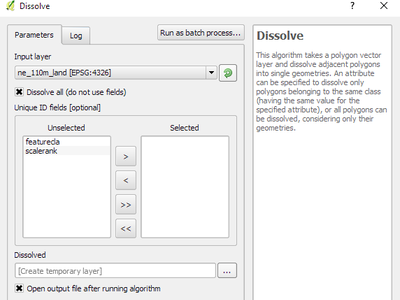

Qgis 2.18.28 Download Of Feature
QGIS is a Geographic Information System (GIS) which manages, analyzes and display. Alternatively, the.Connect to wfs and select e.g: 'Invloedsgebied_Metro'See error Log message panel: T15:18:00 WARNING DescribeFeatureType network request failed for url pageSize='0' pagingEnabled='true' srsname='EPSG:28992' typename='ms:Invloedsgebied_Metro' url=' version='2.0.0' table="" sql=: Download of feature type failed: SSL handshake failed T15:18:00 WARNING Download of feature type failed: SSL handshake failedCurrent version of this machine: QGIS version 3.8.2-ZanzibarPostgreSQL Client Version 10.10 (Ubuntu 10.10-0ubuntu0.18.04.1)Current server which on mapserver is configured is running TLS 1.2 for authentication protocols. Setting PATH and SYSTEM variables. The easiest solution is to install a stand-alone version of GRASS, i.e. You should be able to use any of the listed mirrors by adding a line to your /etc/apt/sources.

As a user, the branches that are usually important to us are the LTR and LR branches as these hold the release versions of QGIS. These are the Long Term Release (LTR) branch, Latest Release (LR) branch, and the Development (Nightly) branch. It is the 4th Point Release of the 3.16 versionWe mentioned the LTR and LR branches above but what do they mean? Technically, QGIS has three branches that a user can download/install. It is based on the 3.16 release version A Point Release is released every month for each of the Long Term Release (LTR) and Latest Release (LR) branches. For example, QGIS 3.15 is the develpment version for QGIS 3.16 and QGIS 3.17 is the development version that eventually becomes released as QGIS 3.18.The Z pertains to which Point Release (PR) it is of the release version.
A new LR is released every four (4) months. The current LTR release version is 3.10.Z but it will be replaced by 3.16.4 by February 2021.Latest Release (LR) refers to the release version of QGIS that containst he most recent or latest features. Currently, that means one (1) year. So what does LTR, LR, and PR mean?LTR and LR are designations as to the kind of release.Long Term Release (LTR) is named that way because it is maintained and receives bug fixes until the next LTR is released.
It will replace the Old LTR once the new LR (in this case 3.18.0 on February 2021) is released.Point Release (PR) refers to the monthly release of QGIS. During the first four months after the release of the new designated LTR (in this case 3.16.0 in October 2020), it won’t immediately replace the currecnt LTR in the LTR repositories. The 3rd LR from 3.10 is 3.16 (1st is 3.12, 2nd is 3.14, 3rd is 3.16) therefore the next LTR will be based on the 3.16 release version. For example, the LTR this October 2020 is the 3.10 release. Currently, every 3rd LR becomes the next LTR. The next LR (3.18) will be released 4 months from now which is on February 2021.
Qgis 2.18.28 Code Available On
This version is not receommended for use in production environments or those the require a stable version of QGIS.What is the QGIS development cycle and when are versions released?As mentioned above, QGIS follows a consistent development cycle. This versions is great if you want to test new features before they are officially released. This version has the most recent (bleeding-edge) features but most of them might not have been fully tested and could include some bugs. But what about the nightly or development version?The development or nightly version is based on the most recent version of the source code available on the master branch of QGIS. The PR for the LTR contains bug-fixes while the PR for the LR contains both bug-fixes and new features.
If you need a version that is maintained for a longer time and you don’t necessarily need new features as they are released then the LTR version might be for you. Every month, a Point Release for the LTR and LR branches are released. During the last month of the release cycle, a feature freeze is implemented where no new developments or features are added and the efforts are focused on testing, bug-fixing, translations, packaging, and other preparation for the release. In those 4 months, the first 3 are for feature development and bug-fixing. A new release version is released every 4 months.
The LR has the most recent (tested) features of QGIS. The LTR receives bug fixes until the next LTR is released (currently 1 year) but may not have new features that are in the LR. There are three (3) branches or versions of QGIS that you can easily install: the Long Term Release (LTR), Latest Release (LR), and Development (Nightly) Sometimes it’s also good to take a look at the development or nightly versions especially if you are curious or excited about the upcoming features in QGIS.
The exception is QGIS 3.14 which was named after Pi.Prior to this, the names of QGIS versions were based on the moons of Saturn and JupiterAs well as some other things (pets if I’m not mistaken).And those are some thigns about QGIS versions and its release cycle. BONUS 2: Names of versionsCurrently, the names of QGIS versions are based ont he places where QGIS User Conference at Developer Meetings where previously held such as Hannover, București, A Coruña, Zanzibar, Madiera, etc. In fact, QGIS prefers being called and refered to as QGIS instead of Quantuam GIS. Every month, a Point Release is released for the LTR and LR branches.You’ve probably heard the name Quantum GIS or seen it used interchangebly with QGIS, especially those who became acquainted with QGIS during its version 0 and 1 days but did you know that since QGIS 2 in 2013, QGIS has officially changed its name from Quantum GIS to QGIS.


 0 kommentar(er)
0 kommentar(er)
